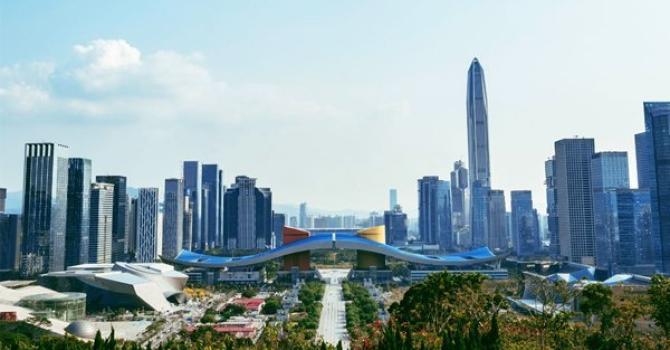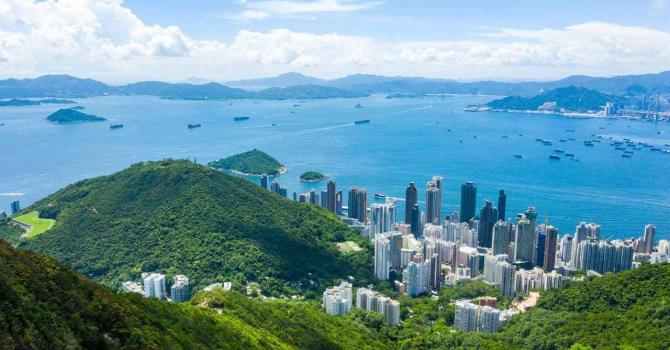A Trading Scheme Supported by Spatial-Temporal Emission Profiles
In the light of the forthcoming environmental and climate related regulations, Yiqi Zhang, one of three winners of the Future Maritime Leaders essay competition, argues how a trading scheme will offer flexibility for regulation compliance during a policy transition period and provide financial incentives for the industry to upgrade to a greener business.
With growing appreciation for public health and environmental benefits arising from controlling shipping emissions, the International Maritime Organization (IMO) and local governments have established new regulations to prevent shipping-related air pollutants and set up ambitious goals on decarbonization. The IMO 0.5% sulphur cap will come into effect next year, then followed by a NOx limit, and finally the focus will shift toward CO2 reduction. While stricter regulations on shipping emissions control are an inevitable trend on both global and regional levels, the regulations and policy agendas vary with regions and governance levels. For example, China has mandated the same requirement as the IMO 2020 sulphur cap for all vessels within China domestic emission control areas (DECA) since January 2019, one year earlier than the effective start of the cap globally. Similarly, the timelines of Tier III NOx limits for new ships are different in the existing IMO-designated Emissions Control Areas (ECAs). With more new emissions control areas to be introduced in the future, the regional variety of control policy and the challenges for the shipping companies would be further intensified.
Regardless of regional variety, the consensus is that the shipping industry ultimately should transit to greener business operations with stricter emissions standards. But during the process of policy change ranging from global convention to local regulations, shipping companies need to make decisions despite policy uncertainty and contend with a heavier financial burden on business operations. To meet the IMO 2020 sulphur cap, ship owners have to make decisions about whether to switch to the more expensive fuel with a lower sulphur content, to invest in scrubbers, or to shift to LNG powered vessels. Concerning the policy uncertainty resulting from different policy agendas in different areas, most ship owners stay conservative and choose to use more expensive compliant fuel, instead of installing scrubber systems or buying LNG vessels, both of which involve long-term investment. While SOx reductions could be achieved through switching to lower sulphur fuel, NOx and CO2 abatement strategies require technology upgrades or a transformation of the industry. Therefore, in the long term, we need a solution to offer incentives for industry upgrades and meanwhile provide flexibility in this policy change process.
In this paper, I propose to develop an emissions trading scheme supported by spatial-temporal profiles. To be specific, the scheme has two major components: spatial-temporal emission profiles of individual companies or specific shipping routes, and location-specific emission allowance acknowledged by corresponding ports. Thanks to the widespread usage of Automatic Identification System (AIS), we have been able to identify and track the spatial and temporal information of shipping activities. With AIS data, we can estimate and predict the shipping emissions of a specific vessel with high-resolution spatial-temporal profiles. As a result, the spatial-temporal emissions profiles provide not only the total amount of emissions, but also the spatial distribution. With the spatial-temporal emissions profiles, the company could elucidate their emissions contributions to specific ports or areas. If the company applies new abatement strategies, the spatial-temporal profile will help the company present where the emissions reductions are located and who will be the beneficiary. Based on the spatial-temporal profiles, the port could issue an emission allowance to the ‘cleaner’ vessel associated with the fact that its shipping activities within the territory waters produce ‘fewer emissions’.
I take SOx control policy as an example to demonstrate how the trading scheme would work. In scenario I, ship A is fueled by LNG with zero SOx emission and is therefore ‘cleaner’ than the emission standard in Port A waters mandating a 0.1% sulphur limit. It is estimated that 100kg of SOx would be emitted from ship A within Port A waters if it was using compliant fuels with 0.1% sulphur limit. Thus, ship A is eligible to apply for an allowance of 100kg SOx emissions that can be sold in the market. The allowance, however, has spatial restriction and is only applicable in Port A waters. In scenario II, ship B does not meet local emission standards. Port A waters require ships to use fuel with 0.1% sulphur limit while ship B uses global compliant fuel with a 0.5% sulphur limit that is estimated to emit 100 kg more of SOx emissions. To comply to the local emission standard, ship B could either switch to use local compliant fuel with 0.1% sulphur content or buy an allowance of 100kg SOx emissions applicable to Port A waters from the market. In addition to the spatial restriction, the allowance could be issued with a temporal restriction. For example, Port A issues the emission allowances that are not applicable in December when it is expected to have severe haze pollution episodes based on historical spatial-temporal profiles of air quality records. In this case, if ship B wishes to enter Port A during December, it will not able to comply with the local emission standards through buying an allowance.
When it comes to emissions control, local authorities need to develop the policy agenda based on their local conditions, keeping the balance between local air quality, public health, energy system, port competitiveness, governance cost and resource allocation. But unlike other emission sources such as power plants or vehicles, shipping is a global nonpoint activity, and hence it is challenging for international vessels to travel among areas with different policy schedules and regulations. The proposed trading scheme supported by spatial-temporal emission profiles, therefore, offers flexibility for regulation compliance during the policy transition period and provides financial incentives for the industry to upgrade to a greener business model.



